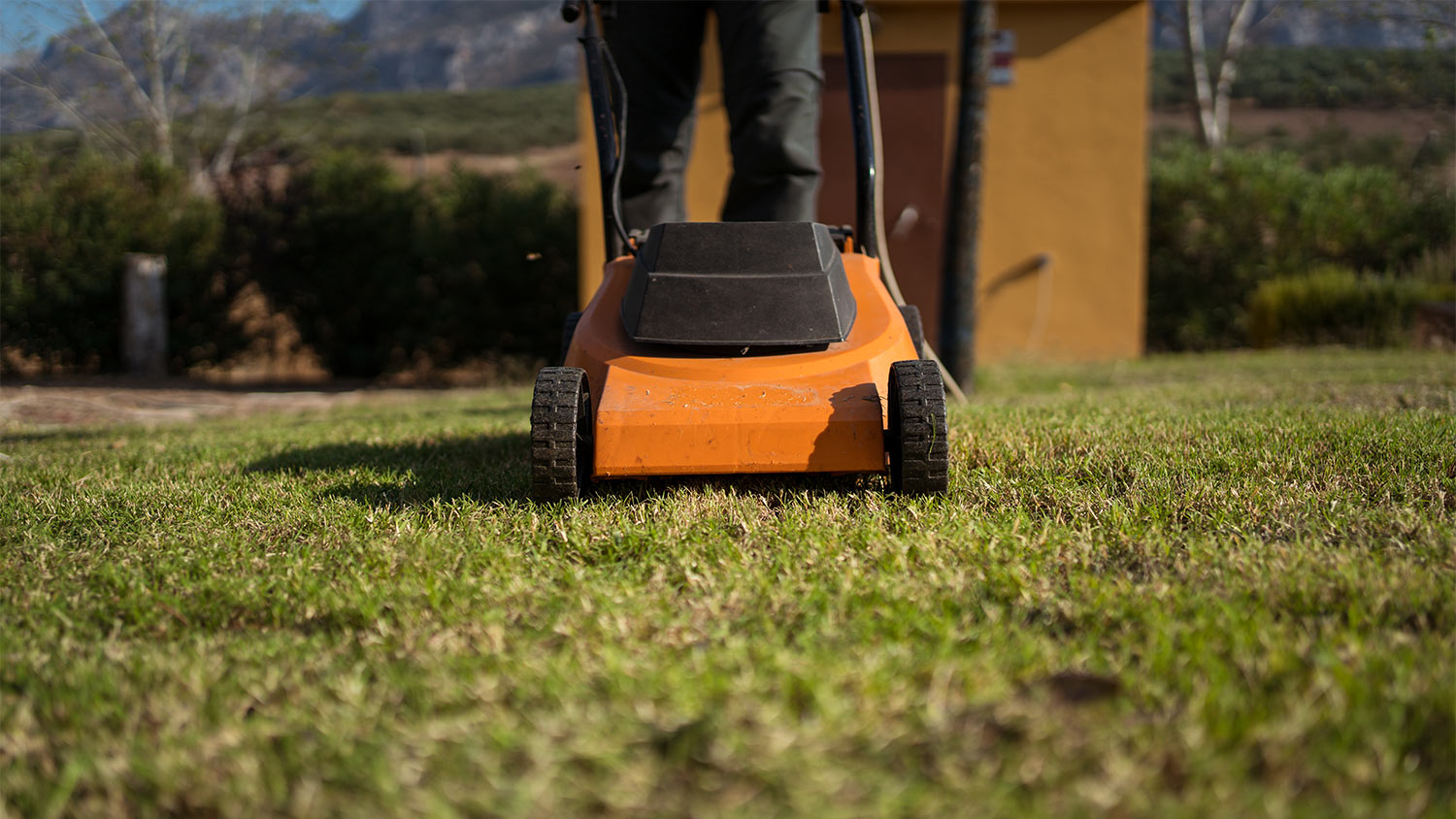
If you discover a wasp nest near your home, you’ll want to remove it ASAP. Learn wasp nest removal cost factors in this guide.
Prevention is what keeps your house off the menu


Although the cost of professional termite treatment is around $600, it might be worth hiring a pro since termite damage repairs will be more expensive.
While you can DIY a handful of termite prevention tasks, a pro has the tools and skills for complete treatment and eradication.
Even with DIY methods, it might be worth hiring a termite control company to inspect your home for your peace of mind.
Termites are one of the most costly pests that can invade your home. The longer they dine on your house, the more and more money drains from your bank account. Now that’s one expensive dinner!
So how do you protect your home and your wallet? Aside from termite treatments, prevention is the most effective weapon against these tiny yet destructive creatures. If it’s subterranean, dampwood, or drywood termites, tell these pests to go somewhere else for their next meal by following these 10 prevention tips.
Your first tip in termite prevention is removing any possible entry points into your house. Termites only need 1/32 of an inch to enter your home, so finding and sealing any potential access areas is crucial.
Over time, your house naturally settles, and many materials shrink and expand. This includes concrete, wood, metal, and PVC.
A few methods of removing termite access include:
Filling in cracks and gaps around water and gas lines with caulk or a foam sealant.
Patching cracks in the home’s foundation with cement or a patching compound.
Painting wood to fill in the small cracks and crevices.
Installing bug screens over foundation and attic vents.
Termites, like most pests, are attracted to areas with water. This is because termites need water for hydration, but it also helps them easily digest the cellulose found in wood.
To keep moisture to a minimum around your home, try these methods:
Make sure gutters carry water away from the foundation.
Double-check that storm drains empty several feet away from the house.
Don’t point sprinkler heads toward the home’s foundation.
Eliminate pools of water by repairing leaky pipes and air conditioning units.
Install a dehumidifier or a vapor block barrier in crawl spaces.

Many pests, termites included, enter the house because they detect food. For termites, their favorite meal is anything with cellulose, which can be found in wood, grass, plants, and various paper products, including cardboard.
When it comes to removing food access, try the following:
Remove rotting wood and dead trees from around the house.
Remove tree stumps, especially if they’re close to your home.
Prevent storing newspapers and paper products in or around the house for a long time.
Avoid using cardboard boxes for storage. Instead, try plastic containers.
Store important papers in sealed containers or cabinets in the upper levels of your home.
When you take preventative measures to extend the life of your wood deck from the elements, you can also incorporate a few extra steps to help repel possible termite issues.
Some of those steps include:
Spray your wood with borate before priming and painting. Borate soaks into the wood and naturally repels termites.
Never neglect your wood deck or steps. Keep the wood painted or stained because this fills in even the tiniest crevices.
Prevent pools of water from forming on your deck by avoiding planters and fixing leaky gutters.
We already know that wood is the main food of choice for termites, so having wood on the ground near your home is like placing a big welcome mat for subterranean termites to enter and get cozy.
Here are some tips to avoid wood-to-ground contact:
Ensure wood siding and window frames are 6 inches above the ground.
Stack firewood at least 20 feet away from your home and 8 inches above the ground.
Use a termite-proof paint or stain for your wood fence.
Lay mulch at least 4 inches away from your home or ensure mulch only touches the concrete area of the foundation.
If you have pine bark or softwood mulch around your home, especially if it’s 3 inches thick or more, it can attract termites that like to use it as their home. However, particular kinds of mulch can actually help repel termites too.
Consider using one of the following kinds of mulch:
Cedar mulch contains resin, which is toxic for termites.
Melaleuca mulch is an environmentally friendly option that termites don’t like to eat.
Cypress mulch contains heartwood, which is the one part of the tree termites do not eat.
Inorganic mulch, such as rocks, gravel, or shredded rubber, can still provide moisture without attracting moisture-seeking termites.

While plants and flowers are lovely for adding curb appeal to your home, they can also inadvertently attract termites. But don't worry; you can still decorate your home by following a few simple tips that won't attract these pests.
Some ways to protect your home include:
Keep all bushes and shrubs at least 12 inches away from your home.
Trim shrubbery to help airflow, allowing damp areas to dry faster.
Cut grass regularly and rake out the excess.
Install planters or window boxes made from composite materials for flowers instead of planting directly in the ground next to the house.
Storing wood in an open and exposed area near your home can attract termites. Some homeowners will stack firewood outdoors, but doing so could welcome these insects. Termites don't make a home in stacked wood, but will use it as a food source. If you leave wood outdoors for a long period of time, eventually the termites will eat through the wood until it crumbles into dust.
If you do need to store firewood outdoors, keep it off the ground. Keeping the wood elevated is the most effective way to prevent termites as they tend to nest close to the ground.
Bait stations can be highly effective in preventing a subterranean termite infestation. These termites build colonies 18 inches underground, so bait stations are a solution for targeting these below-ground pests before they come to the surface to wreak havoc.
There are below-ground and above-ground bait stations. Both offer several benefits, including:
Early detection of termites without having to use chemicals.
Using a limited amount of insecticide in a very targeted way.
Easy installation that requires minimal upkeep and maintenance.
By doing routine checks for termite damage, you may be able to catch any issues before they blossom into an entire termite infestation.
Some of the most common signs of termites include:
Mud tubes along the side of your foundation. These pencil-wide tubes are tunnels termites use to enter your home.
Discolored or peeling paint may signify mud tubes behind the walls.
Buckling floorboards or loose tiles can result in wood damage or additional moisture termites brought into the home.
Discarded termite wings around baseboards or window sills.
Termite pellets that look like small dust piles resembling piles of salt and pepper.
While following some simple, everyday termite prevention tips, it's always good to have someone from a professional local termite company come and regularly check your property for any early signs of termite issues. This is especially important if you live in an area more prone to these pests.
A termite inspection costs $165 on average but can vary depending on the size of your house.
With their expert eyes, a professional will do the following during a routine termite inspection:
Inspect both the interior and exterior of your home for activity.
Look for signs based on the different species of termites, such as wood damage, discarded wings, termite droppings, etc.
Report back to you what they found, and if there are any issues, they can provide a quote right on the spot.
If they don't see any problems, they can recommend any additional termite prevention tips specific to your home.
If you decide to hire a termite exterminator, the cost of termite treatment runs about $600, on average.
From average costs to expert advice, get all the answers you need to get your job done.

If you discover a wasp nest near your home, you’ll want to remove it ASAP. Learn wasp nest removal cost factors in this guide.

Moth infestations can cause damage to items in your home. Learn how much moth extermination costs and ways to save in this informative guide.

When calculating the cost of hiring a flea exterminator, consider your home size and the infestation extent. This guide will help you figure out what to budget.

If you see a mouse hole in the wall, it’s time to seal your house from mice. Our guide will show you how to safely and humanely seal a house from mice.

Need to get rid of pesky pantry bugs from your kitchen? Follow our step-by-step guide to learn more.

Learn effective methods for how to get rid of lizards on your property and in your home. These helpful tips will help you create a reptile-free environment.